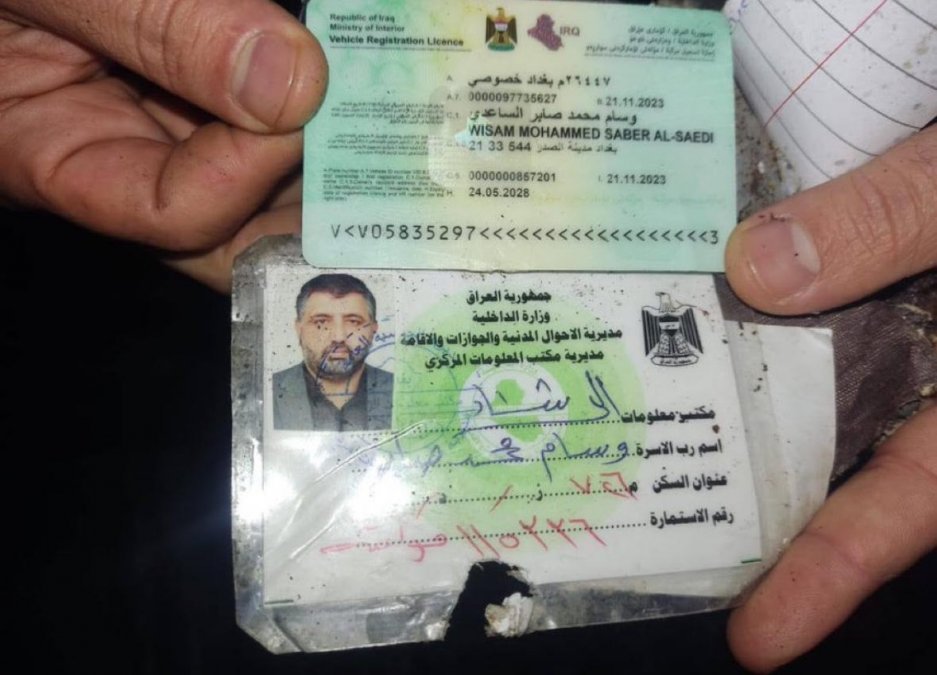Two Recent Deaths in Attacks on Proxy Groups in Iraq and Lebanon
Anonymous but Important
Two recent deaths in attacks on proxy groups in Iraq and Lebanon. U.S. and Israeli attacks against forces and proxy groups affiliated with the Iranian Republic in Iraq, Syria, and Lebanon have increased. As a result of these attacks, two of the most important commanders of Tehran-affiliated militias were killed over two days, one in Iraq and the other in Lebanon.
On Wednesday, February 7th, a U.S. drone attack on a vehicle in southeast Baghdad, the capital of Iraq, resulted in the death of Abu Baqir al-Saadi, one of the prominent commanders of the Kata’ib Hezbollah group, and two of his companions.
The missile fired at this vehicle by the drone was a Hellfire precision-guided missile, the same type used in targeting the vehicle carrying Qasem Soleimani, the former commander of the Quds Force of the Revolutionary Guards, in Baghdad.
In a statement from U.S. Central Command, CENTCOM, it was mentioned that the Wednesday evening attack killed the person responsible for planning attacks against American forces in the region. The recent U.S. attacks are in response to recent months’ attacks by Iraqi militias, primarily Kata’ib Hezbollah, on bases hosting American forces in Iraq and Syria. Last week’s attack on Base Tower 22 in northeastern Jordan resulted in at least 3 American soldiers killed and 4 others injured.
Abu Baqir al-Saadi, head of the missile unit of Kata’ib Hezbollah
Various media, quoting security sources and sources close to Iran-backed militias, described al-Saadi as one of the most important and dangerous commanders of Kata’ib Hezbollah in Iraq, who was responsible for commanding the missile unit of this militia. Al-Araby Al-Jadeed reported that al-Saadi was in charge of the drone attack on Base Tower 22, which killed three American soldiers.
According to this report, until 2007, al-Saadi was a member of the Sadr Movement. That year, he went to Iran, separated from the Sadr Movement, and joined Kata’ib Hezbollah. Since then, he has been involved in planning and executing operations.
Al-Araby Al-Jadeed, quoting a security source, wrote that the assassination of al-Saadi is a significant blow to Kata’ib Hezbollah and other Iran-backed militias and indicates the danger threatening the commanders of these groups. Kata’ib Hezbollah and the al-Nujaba militia, in separate statements, promised to avenge al-Saadi’s blood.
Abbas al-Dibs, a commander of Hezbollah in Lebanon
On Thursday, an Israeli drone attack on a vehicle in the Nabatieh area in southern Lebanon resulted in the death of Abbas al-Dibs, a field commander of Hezbollah in Lebanon. According to the Israeli Army Radio, Abbas al-Dibs was the commander of Hezbollah forces in the Nabatieh area. According to reports by Israeli Radio and Sky News, al-Dibs was considered close to Hassan Nasrallah, the Secretary-General of Hezbollah in Lebanon, and Ismail Qaani, the commander of the Quds Force of the Revolutionary Guards.
Abbas al-Dibs was known by the alias Haj Abdullah and was, in fact, the commander of Hezbollah forces in an area from which anti-tank rockets were fired at the Kiryat Shmona settlement in northern Israel. Lebanese media reported that since 2022, al-Dibs had been pursued by Israel due to his involvement with the Revolutionary Guards’ air defense project in Syria. The Israeli newspaper Jerusalem Post wrote that Abbas al-Dibs was trained in Tehran by the Revolutionary Guards in developing drone capabilities.
No photo of Abbas al-Dibs has been published, but in 2022, the Israeli army released a sketch resembling him and announced that he was being pursued due to his involvement in the Revolutionary Guards’ air defense project in Syria.

